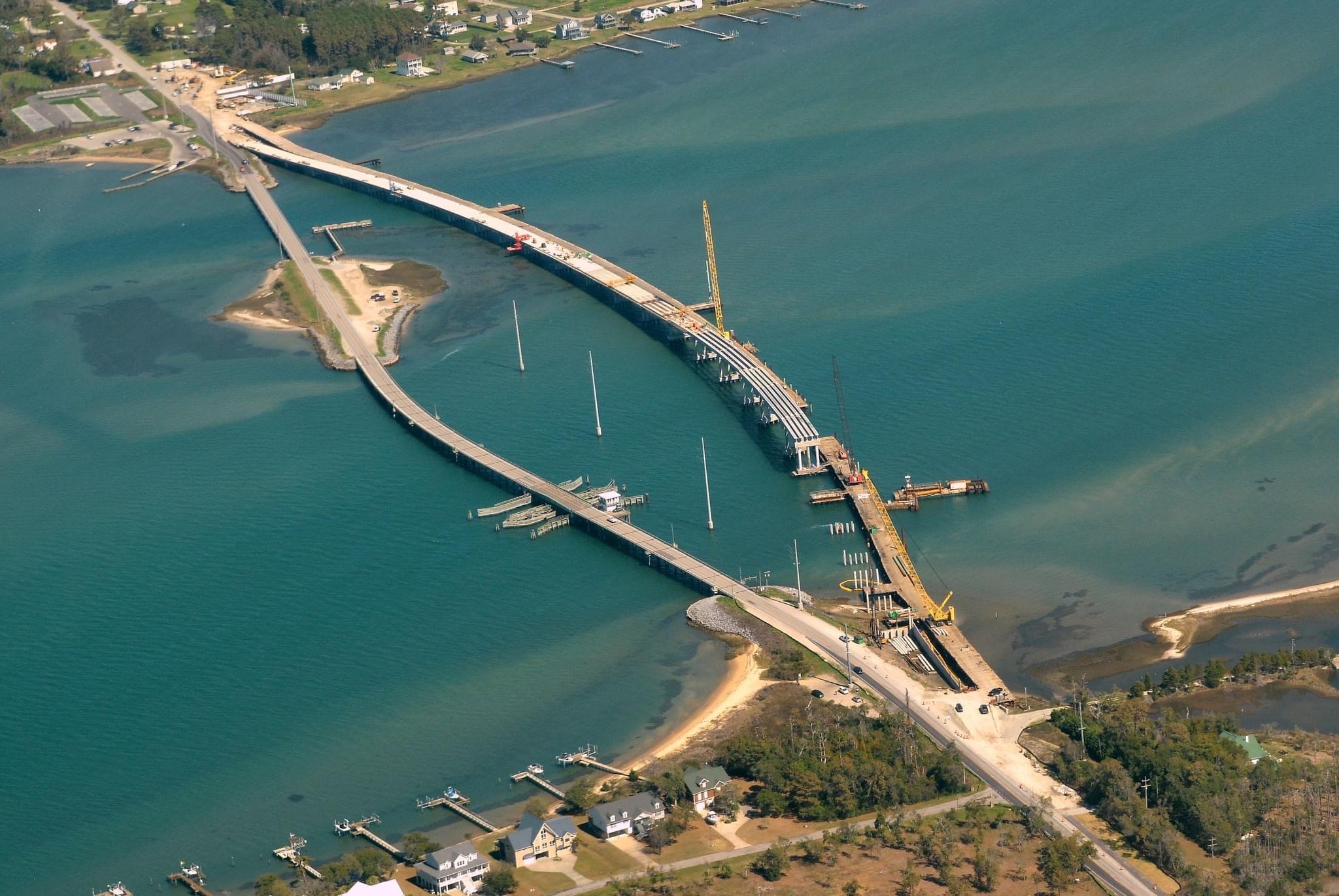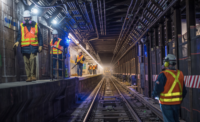Balfour Beatty Finishes FRP-Buffered NC Bridge Year Ahead of Schedule

New bridge replaces a pair of 50-year-old structures in North Carolina.
Photo courtesy of Balfour Beatty
Despite six-month fish moratoriums, construction of a 3,200-ft-long bridge connecting Carteret County in North Carolina directly to Harkers Island has been completed a year ahead of its original schedule.
Demolition of the original Earl C. Memorial Bridge, a steel drawbridge, is slated to wrap up this month while Bridge No. 96, which continued the connection past a fishing pier causeway, is being repurposed as a pedestrian bridge to provide access to the center island and a renovated Straits Fishing Pier.
The new fixed-span bridge, constructed over the straits to the east of the two 50-year-old structures, provides a direct path for drivers traveling to and from the mainland. With a 45-foot navigational clearance, it allows boats to pass unimpeded and safely allows motorists to travel without waiting for bridge openings that could take as long as 15 minutes.
The structure sports carbon fiber-reinforced polymer (CFRP) strands and glass fiber-reinforced polymer (GFRP) bars to better withstand the coastal environment. “Some years back we had to replace all the core slabs because of the salt water and corrosion” on the drawbridge, says Brad McMannen, North Carolina Dept. of Transportation project manager. “Concrete was falling off and the [swing span] was getting locked up. From a maintenance standpoint, it was time for something new and different.”
Balfour Beatty won the $68-million job in fall of 2021. “Once we got on site, we talked about the [possibility] to finish ahead of schedule by a year,” says Mark Johnnie, Balfour Beatty U.S. Civils COO.
The contractor value-engineered the pre-drilling process to speed up the schedule, says Peter Distefano, Balfour Beatty senior project manager. To eliminate the need to perform a full excavation prior to pile placement, the team leveraged a probe through approximately 5 ft of a hard layer. “The borings showed a fairly soft layer beneath that,” he says. “Essentially the pile excavation called for a 42-in. casing to be installed to drill. So we had that casing and modified it into a probe. We used that to vibrate through the layer.”
Shipping the 28 concrete girders by barge instead of by truck also saved time, as did adding extra shifts. “The letting was in late July, and we were awarded the job in early August,” recalls Distefano. “The moratorium started Oct. 1. We had to start up fast and be driving production piling and trestle piling in the two months between,” he says.
He adds: “We had a pretty strong workforce in the area. We had just finished the Surf City Bridge just south of this project so we had a lot of good crews ready to go.”
Due to the bridge being designed with CFRP and GFRP materials, there were strict requirements which did not allow any ferrous material in the construction of the bridge. “We used friction collars on the piles to support the concrete substructure,” says Distefano. “Lots of exterior supports were needed in terms of falsework.” The bridge bearings and anchor bolts consist of stainless steel, adds Johnnie.
Demolishing the old cord slab-style bridge is “a fairly straightforward process,” adds Distefano. “We have two cranes on two barges—one crane working on the center pivot pier area, the second working the approach spans and cord slab sections.”
The new bridge, which McMannen says carries about 3,500 daily vehicles, opened last December with a significant community turnout. “It’s remarkable how they supported the construction,” says Johnnie, noting a Facebook fan page and locals bringing crews food. “It was something to behold.”




